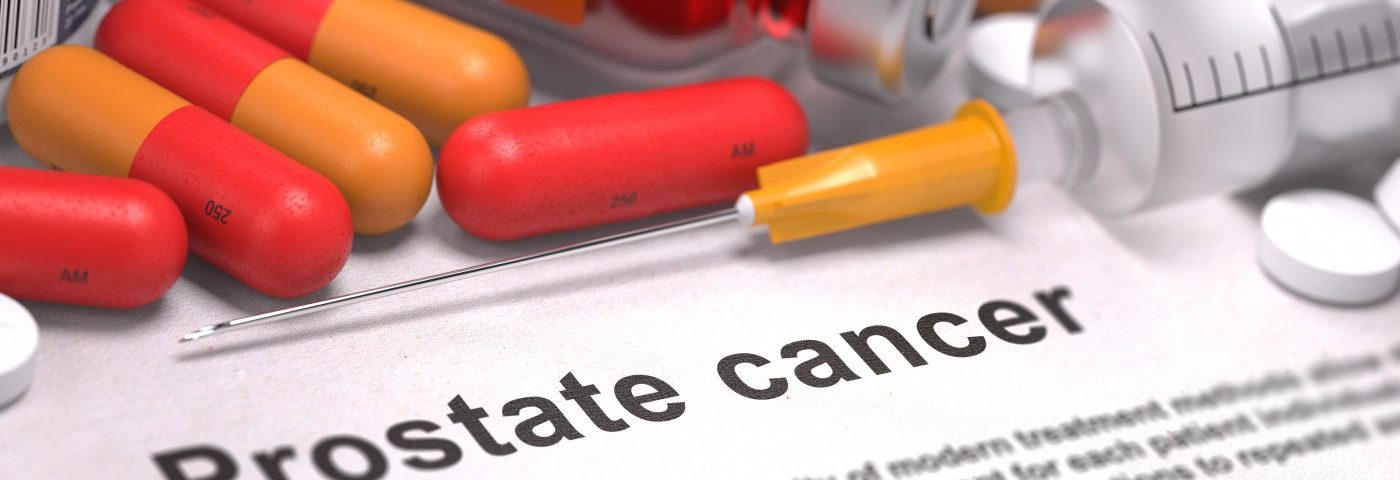In 1999, the Prostate Health Council of the American Foundation for Urologic Disease recognized September as National Prostate Health Month, also known as National Prostate Cancer Awareness Month. The American Cancer Society lists prostate cancer as the second most common type of cancer and the second leading cause of cancer deaths in American men.
According to the Urology Care Foundation, 1 in 9 American men will receive a prostate cancer diagnosis. Recently, researchers have studied the connection between prostate cancer and inflammatory bowel disease (IBD). More than 3.1 million men are prostate cancer survivors. Being female, I’m not one of them. However, my father is.
Prostate cancer symptoms, diagnosis
A man usually doesn’t have symptoms in the early stages of prostate cancer. As it progresses, he may experience urgent, frequent, or painful urination. Painful ejaculation, blood in the urine or semen, and frequent urinary tract infections are other indicators.
Doctors commonly detect prostate cancer through routine screenings. The American Cancer Society recommends men with an average risk get tested at age 50. African Americans and men with a father or brother who had prostate cancer before age 65 are high-risk and should begin testing at age 45. Higher-risk patients — those with multiple immediate family members with prostate cancer — should begin at age 40.
A doctor screens for prostate cancer with a physical exam and a blood test. During a digital rectal exam (DRE), the provider inserts a finger into the rectum to feel the prostate for lumps and other abnormalities.
The blood test measures the amount of prostate-specific antigen (PSA) present in nanograms per milliliter. Most men with a PSA of 4 ng/ML or less won’t require further testing. They should be screened every two years after that if the PSA level is 2.5 ng/mL or less. For levels between 2.5 and 4 ng/mL, they should be tested annually. If the DRE or PSA level is abnormal, the physician will order additional tests, refer the patient to a urologist, or perform a biopsy to diagnose cancer.
In 2006, at age 68, my father’s steadily rising PSA increased to 12 ng/mL. After the first biopsy came back negative, his doctor performed a second biopsy to collect deeper tissue samples. Some of the cells were noncancerous, while others tested positive. Out of precaution, the doctor treated my dad for prostate cancer.
Prostate cancer scoring and treatment
Pathologists assess the severity of prostate cancer using a Gleason score. A pathologist grades the biopsied tissue on a scale of one to five, with one representing normal tissue and five indicating severely mutated tissue. The Gleason score is the sum of the first and second most predominant grades. Although the total can range from two to 10, pathologists rarely grade prostate cancer less than six. A Gleason score of six is low-risk cancer, seven is intermediate, and eight to 10 is high-risk.
The risk level determines treatment. An older man who is low-risk or has a low PSA and slow-growing cancer may put off treatment, and his physician can monitor for symptoms or complications. If cancer is localized, a popular treatment is surgically removing the prostate gland and surrounding tissue. Another option for low-risk patients is cryosurgery, where the doctor freezes the cancer cells.
If surgery doesn’t eliminate all malignant cells or if cancer recurs, the patient may receive radiation therapy. An oncologist may use radiation alongside other treatments or to treat advanced cancer symptoms.
More aggressive treatment may be necessary if the patient is high-risk, the cancer spreads or returns, or previous treatments are unsuccessful. Hormone therapy can reduce androgen levels to prevent prostate cancer cell growth. With chemotherapy, medication can kill cancer cells. And immunotherapy uses medications to stimulate the patient’s immune system to attack cancerous cells.
Neither of my parents remembers what my dad’s Gleason score was. However, he must have been low-risk because he only had surgery and didn’t require additional treatment. He’s been in remission ever since.
Prostate cancer and IBD
In 2019, the journal European Urology published a study finding that IBD patients were almost five times more likely to develop prostate cancer and four times more likely to exhibit higher PSA levels after age 60. A 2020 Italian meta-analysis of previous research also concluded that IBD patients, especially those with ulcerative colitis, experienced a higher incidence of prostate cancer.
Although my dad never received a formal IBD diagnosis, he has suffered gastrointestinal issues for most of his life. As a child, he briefly had ileocolitis, an inflammation of the small intestine and colon. In 1987, he had a partial colectomy caused by an infection. Surgeons removed another six inches of his colon in 2005 because of an obstruction. Seven years later, his gastroenterologist found colorectal cancer. I don’t know if either my parents or the doctors ever considered if his two cancer scares were related.
With my track record of Crohn’s disease complications, I’m glad I’m a woman. I’m 100% positive I have a 0% chance of prostate cancer.
***
Note: IBD News Today is strictly a news and information website about the disease. It does not provide medical advice, diagnosis, or treatment. This content is not intended to be a substitute for professional medical advice, diagnosis, or treatment. Always seek the advice of your physician or other qualified health providers with any questions you may have regarding a medical condition. Never disregard professional medical advice or delay in seeking it because of something you have read on this website. The opinions expressed in this column are not those of IBD News Today, or its parent company, BioNews, and are intended to spark discussion about issues pertaining to IBD.

